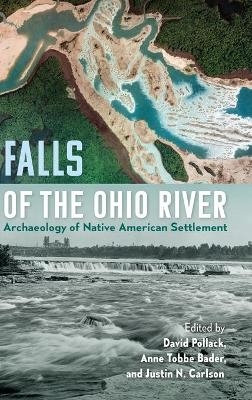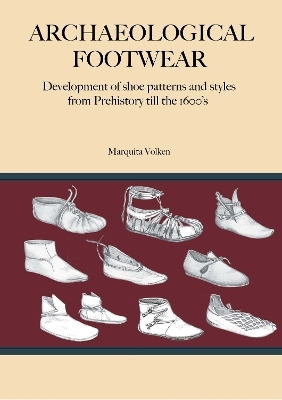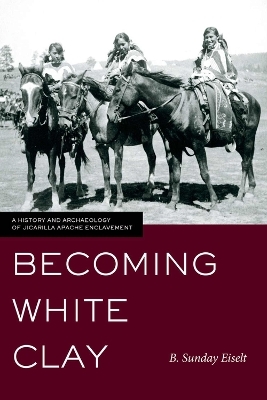
Falls of the Ohio River
Archaeology of Native American Settlement
Seiten
2021
University Press of Florida (Verlag)
978-1-68340-203-9 (ISBN)
University Press of Florida (Verlag)
978-1-68340-203-9 (ISBN)
Presents current archaeological research on an important landscape feature: a series of low, cascading rapids along the Ohio River on the border of Kentucky and Indiana. Using the perspective of historical ecology, contributors demonstrate how humans and the environment mutually affected each other in the area for the past 12,000 years.
Falls of the Ohio River presents current archaeological research on an important landscape feature: a series of low, cascading rapids along the Ohio River on the border of Kentucky and Indiana. Using the perspective of historical ecology and synthesizing data from recent excavations, contributors to this volume demonstrate how humans and the environment mutually affected each other in the area for the past 12,000 years. These essays show how the Falls region was an attractive place to live due to its diverse ecological zones and its abundance of high-quality chert. In chronological studies ranging from the Early Archaic to the Late Mississippian periods, contributors portray the rapids as at times a boundary between Native American groups living upstream and downstream and at other times a hub where cultures converged and blended into a distinct local identity. The essays analyze and track changes in stone tool styles, mortuary traditions, settlement patterns, plant consumption, and ceramic production.
Together, the chapters in this volume illustrate that the Falls of the Ohio was a focal point on the human landscape throughout the Holocene era. Providing a foundation for future work in this location, they show how the region's geography and ecology shaped the ways humans organized themselves within it and how in turn these groups impacted the area through their changing social, economic, and political circumstances.
Falls of the Ohio River presents current archaeological research on an important landscape feature: a series of low, cascading rapids along the Ohio River on the border of Kentucky and Indiana. Using the perspective of historical ecology and synthesizing data from recent excavations, contributors to this volume demonstrate how humans and the environment mutually affected each other in the area for the past 12,000 years. These essays show how the Falls region was an attractive place to live due to its diverse ecological zones and its abundance of high-quality chert. In chronological studies ranging from the Early Archaic to the Late Mississippian periods, contributors portray the rapids as at times a boundary between Native American groups living upstream and downstream and at other times a hub where cultures converged and blended into a distinct local identity. The essays analyze and track changes in stone tool styles, mortuary traditions, settlement patterns, plant consumption, and ceramic production.
Together, the chapters in this volume illustrate that the Falls of the Ohio was a focal point on the human landscape throughout the Holocene era. Providing a foundation for future work in this location, they show how the region's geography and ecology shaped the ways humans organized themselves within it and how in turn these groups impacted the area through their changing social, economic, and political circumstances.
David Pollack, director of the Kentucky Archaeological Survey at Western Kentucky University, is the author of Caborn-Welborn: Constructing a New Society after the Angel Chiefdom Collapse. Anne Tobbe Bader is the owner of Corn Island Archaeology in Louisville, Kentucky. Justin N. Carlson is project director for the Kentucky Archaeological Survey at Western Kentucky University.
| Erscheinungsdatum | 19.04.2021 |
|---|---|
| Reihe/Serie | Florida Museum of Natural History: Ripley P. Bullen Series |
| Zusatzinfo | 31 black & white illustrations, 31 maps, 14 tables |
| Verlagsort | Florida |
| Sprache | englisch |
| Maße | 152 x 229 mm |
| Gewicht | 758 g |
| Themenwelt | Geisteswissenschaften ► Archäologie |
| Sozialwissenschaften ► Ethnologie | |
| Sozialwissenschaften ► Soziologie | |
| ISBN-10 | 1-68340-203-0 / 1683402030 |
| ISBN-13 | 978-1-68340-203-9 / 9781683402039 |
| Zustand | Neuware |
| Haben Sie eine Frage zum Produkt? |
Mehr entdecken
aus dem Bereich
aus dem Bereich
Holocaust heritage, noncitizen futures, and black power in Berlin
Buch | Softcover (2022)
University of California Press (Verlag)
37,40 €
Development of shoe patterns and styles from Prehistory till the …
Buch | Softcover (2023)
Archetype Publications Ltd (Verlag)
89,15 €
a history and archaeology of Jicarilla Apache enclavement
Buch | Softcover (2024)
University of Utah Press,U.S. (Verlag)
47,30 €


